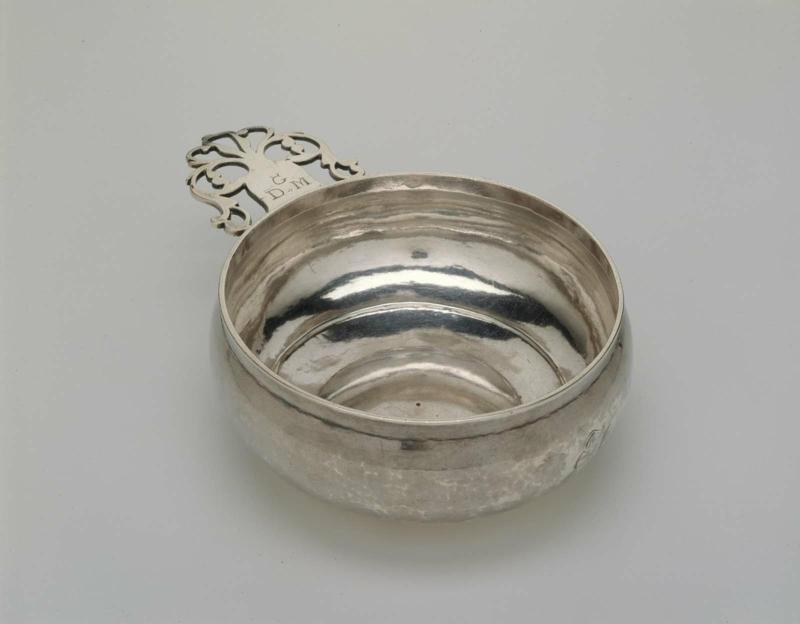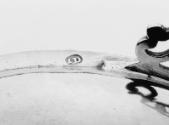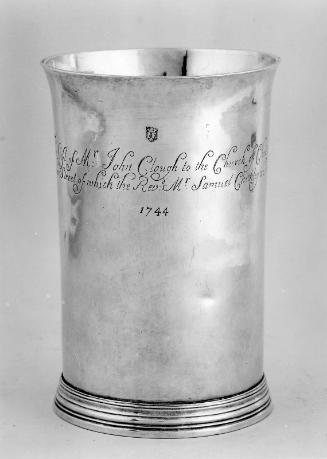Porringer
As one of the leading Boston silversmiths of the early eighteenth century, John Dixwell operated a moderately sized shop that received many important church and private commissions. He also appears to have been among the first American-born silversmiths to be influenced by the prevailing baroque style, the result of a trip to England in 1710. The fashion for designs introduced by French Huguenot silversmiths then working in London, with their emphasis on simple forms, can be seen in the two-handled bell-shaped beakers and dome-top tankards that Dixwell introduced to his Boston patrons in the years after his voyage.
The exact origin of the ubiquitous so-called keyhole porringer handle, popular throughout the colonies in the eighteenth century, is unclear. Nevertheless, Dixwell was possibly the first silversmith to abandon the geometric handle style in favor of this new decorative embellishment. He made several keyhole-handled porringers prior to his death in 1725.
This text has been adapted from "Silver of the Americas, 1600-2000," edited by Jeannine Falino and Gerald W.R. Ward, published in 2008 by the MFA. Complete references can be found in that publication.
1. Emma Worcester Sargent Epes Sargent of Gloucester and his Descendants, (Boston, Ma.: Houghton, Mifflin, and Co., 1923), pp. 146, 148. n.a. Sargent Genealogy: William Sargent and his Descendants to the Children of the Sixth Generation (Typescript, NEHG Library, c. 1951), pp. 56, 145.
2. Edith Austin Moore and William Allen Day, comp., Descendants of Richard Austin of Charlestown, Massachusetts, 1638, St. Petersburg, Fla.: Privately printed, 1968), pp. 102, 186.
3. George Abbot Morison, Nathaniel Morison and His Descendants (Peterborough, N.H.: Peterborough Historical Society, 1951), p. 150; Gary Boyd Robert, "New England Ancestry of HRH Princess of Wales," NEHGR 136 (October 1982):324. Massachusetts Vital Records, Marriages.















